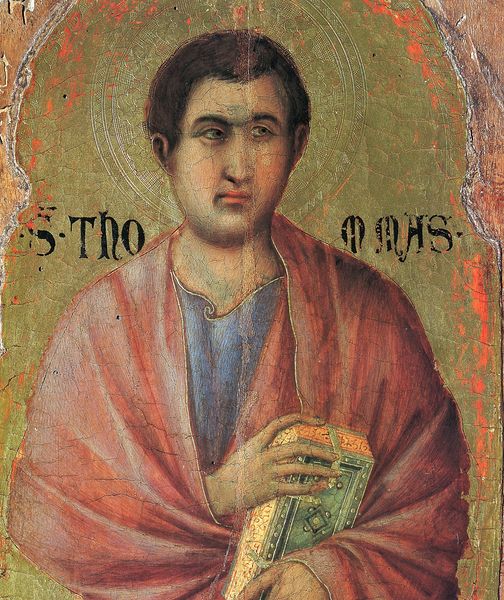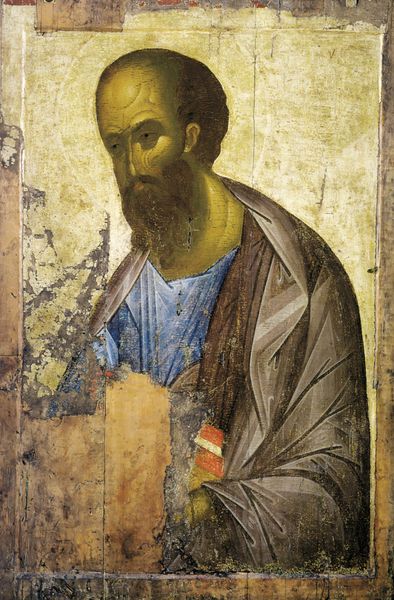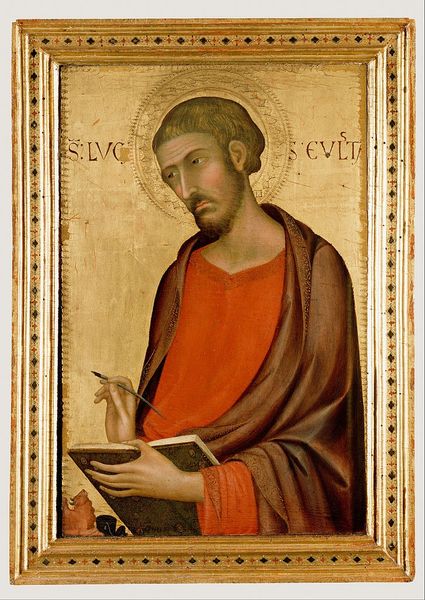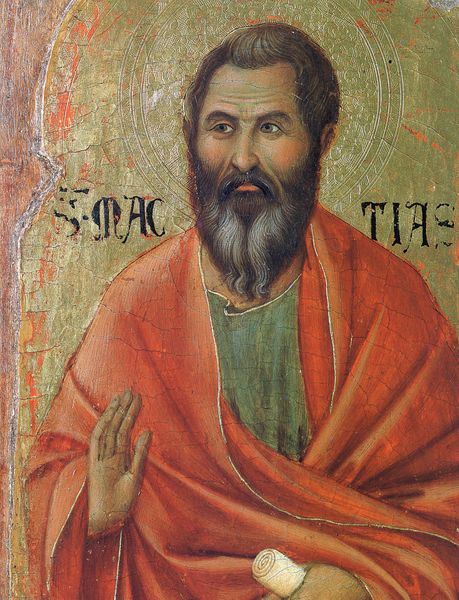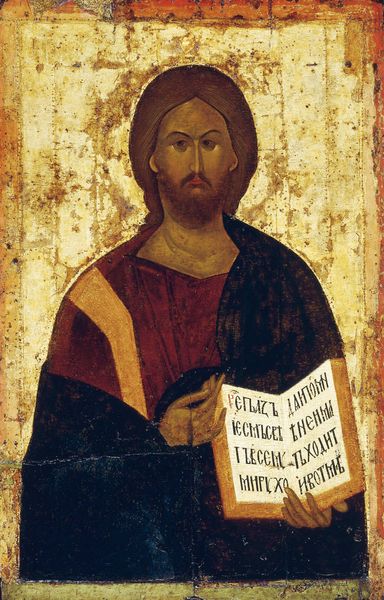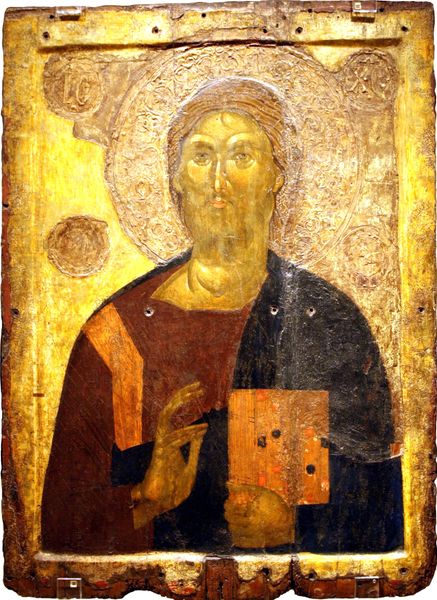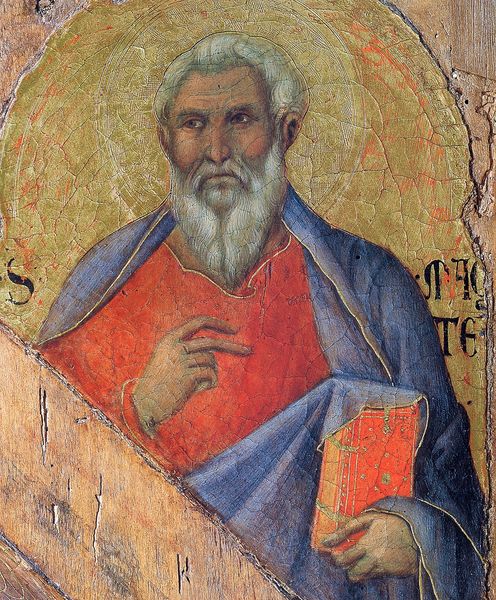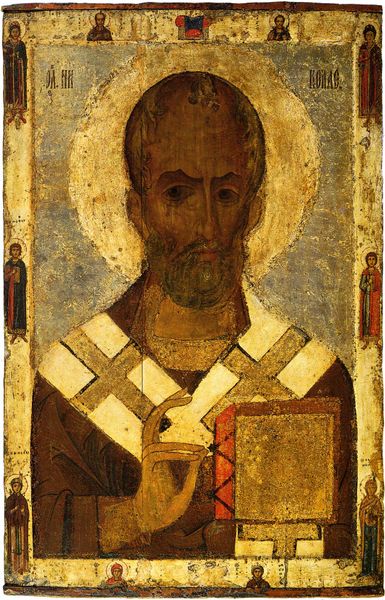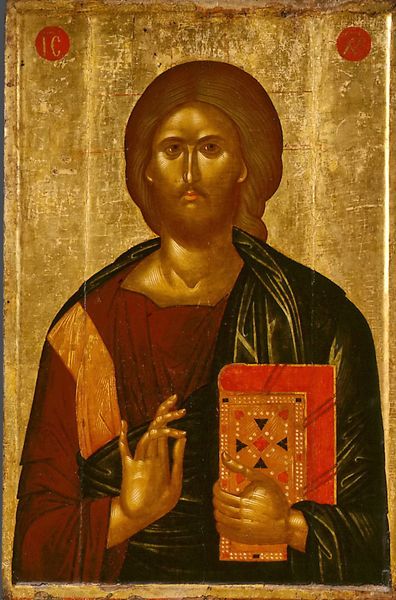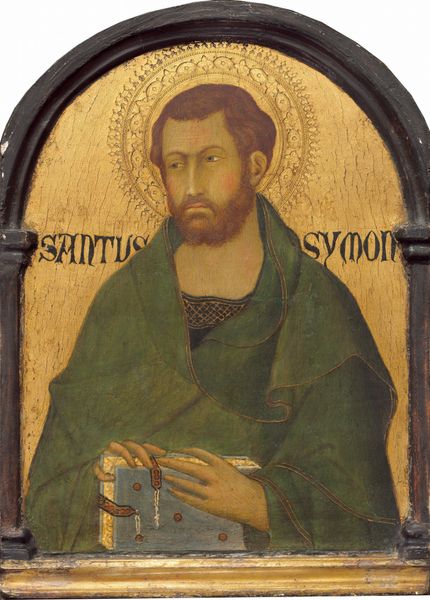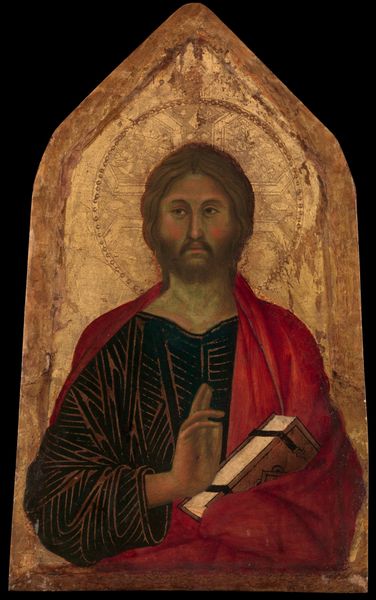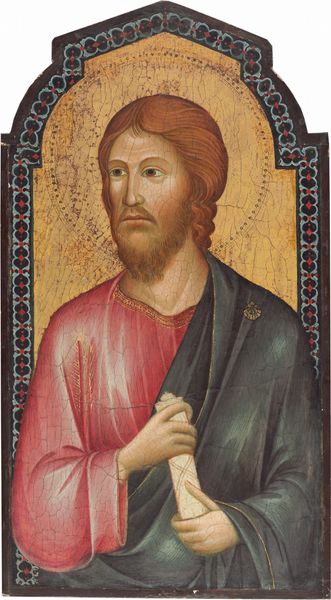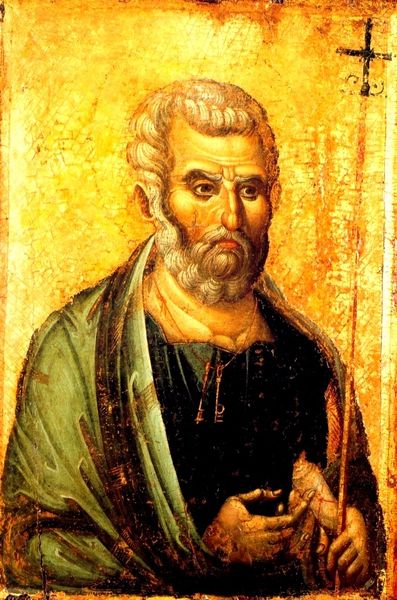
tempera, painting
#
portrait
#
tempera
#
painting
#
sienese-school
#
christianity
#
history-painting
#
italian-renaissance
Copyright: Public domain
Curator: This tempera on panel portrait is "The Apostle Thaddeus," created around 1311 by the Italian artist Duccio. Editor: My immediate impression is one of austere calm, almost melancholy. The muted color palette—those browns and golds—paired with the saint's averted gaze creates a feeling of contemplative detachment. Curator: It’s a complex kind of looking, certainly informed by his place in religious history and its intersections with power dynamics. Thaddeus, holding a book, is presented as a figure of authority, and this work asks us to reflect on the canonisation of historical figures. Editor: I'm particularly drawn to how Duccio utilizes the tempera to build up texture and depth, layer upon layer. Look at the worn surface and the evident hand of the artist. This isn’t some ethereal vision; it’s labor manifested. Curator: Absolutely. We have to also understand how images like these functioned in their original context. These devotional panels helped to enforce the religious power structures and their role in controlling identity during that time. Were there people resisting these portrayals, and how might they have subverted them? Editor: Indeed. The production process itself dictated a certain hierarchy. Gold leaf wasn’t exactly accessible to everyone; consider who would’ve commissioned such a piece, what those economic realities enabled. Curator: I wonder about the relationship between craft and religious identity as well, and if we can interpret his slight upward glance, along with his book, to be a subversive commentary on social expectations. Editor: Thinking about the material impact, these devotional artworks would have had power by virtue of their scale and portability, bringing certain spiritual aesthetics and dogma into more individual and domestic contexts. How were they disseminated and received? Curator: Examining this art helps us question these dominant historical narratives of Christianity through intersectional feminist, queer and decolonial lenses. It requires critical analysis to uncover its complicated history and meaning. Editor: For me, considering “The Apostle Thaddeus,” and paintings of that era in general, raises pertinent questions about what the act of image production signified during its era, what power and labor meant, and what they stand for now.
Comments
No comments
Be the first to comment and join the conversation on the ultimate creative platform.
